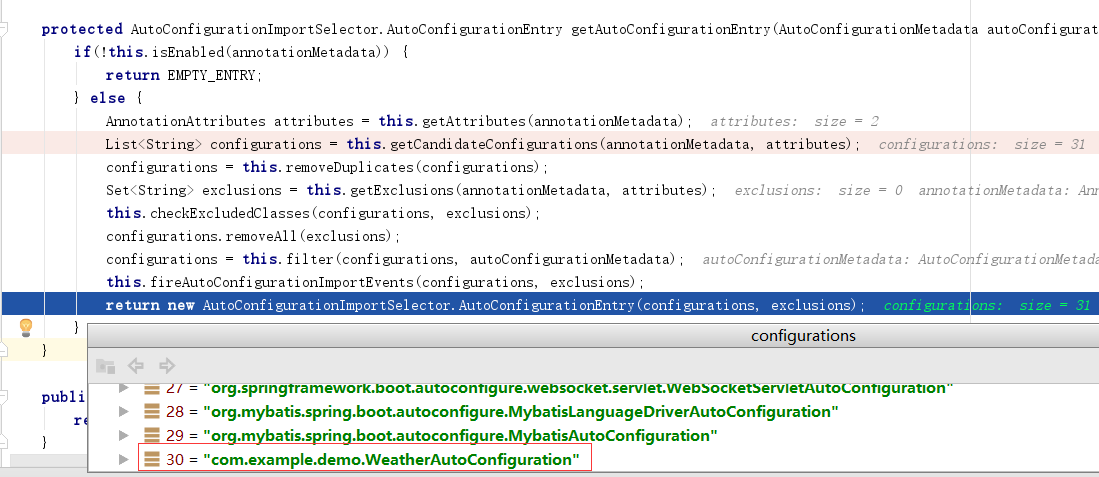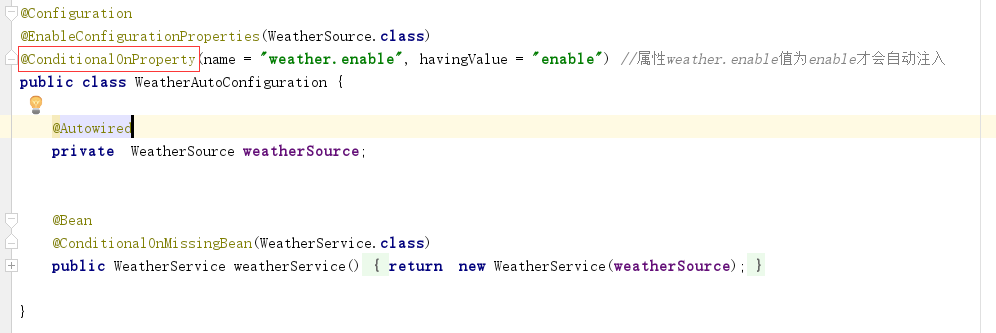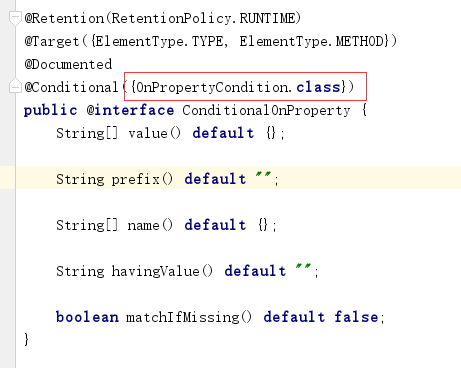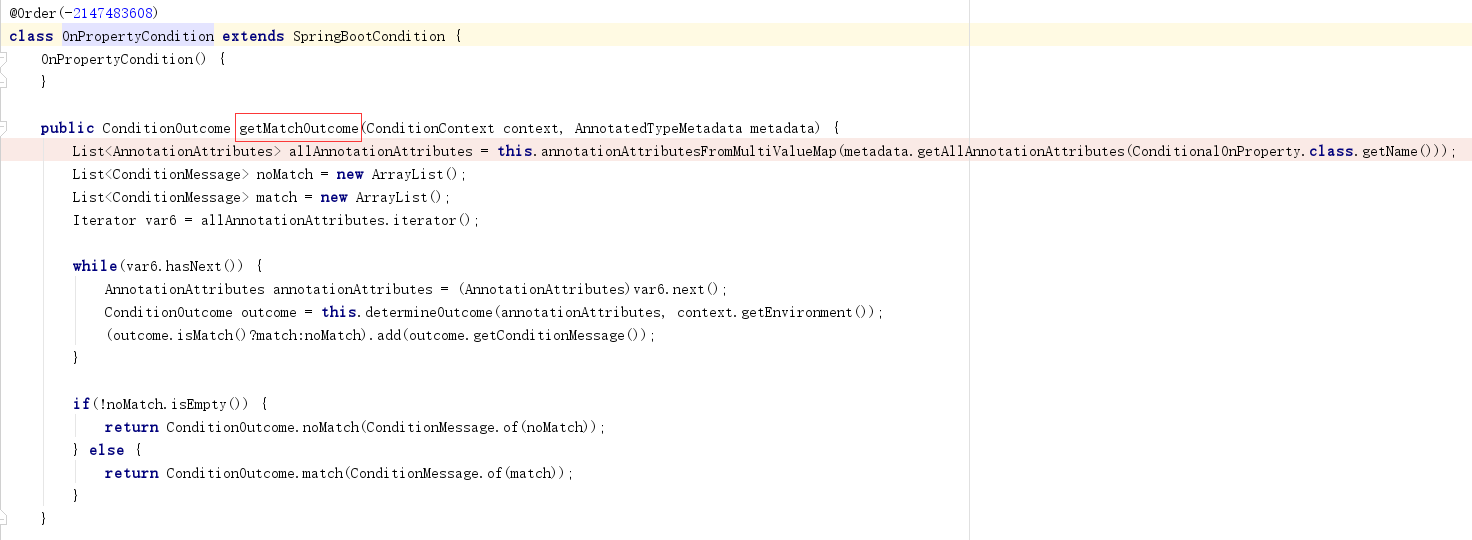Spring Boot starter原理
一、starter自动配置类导入
启动类上@SpringBootApplication -> 引入AutoConfigurationImportSelector -> ConfigurationClassParser 中处理 -> 获取spring.factories中EnableAutoConfiguration实现
1、进入AutoConfigurationImportSelector类的getAutoConfigurationEntry方法

2、然后进入getCandidateConfigurations类。
该方法作用是获得spring.factories当中实现EnableAutoConfiguration接口的类

3 获得所有实现了EnableAutoConfiguration的类

4、最终有WeacherAutoConfiguration

二、自动配置类的过滤
1、进入WeatherAutoConfiguration类

2、进入ConditionalOnProperty注解

3、然后进入OnPropertyCondition类的getMatchOutcome方法。当metadata为com.exmaple.demo.WeatherAutoConfiguration时
遍历注解里的属性,增加到对应的math或者noMatch集合中。如果存在noMatch,则返回不匹配

4、进入determineOutcome方法
private ConditionOutcome determineOutcome(AnnotationAttributes annotationAttributes, PropertyResolver resolver) {
OnPropertyCondition.Spec spec = new OnPropertyCondition.Spec(annotationAttributes);
List<String> missingProperties = new ArrayList();
List<String> nonMatchingProperties = new ArrayList();
spec.collectProperties(resolver, missingProperties, nonMatchingProperties);
return !missingProperties.isEmpty()?ConditionOutcome.noMatch(ConditionMessage.forCondition(ConditionalOnProperty.class, new Object[]{spec}).didNotFind("property", "properties").items(Style.QUOTE, missingProperties)):(!nonMatchingProperties.isEmpty()?ConditionOutcome.noMatch(ConditionMessage.forCondition(ConditionalOnProperty.class, new Object[]{spec}).found("different value in property", "different value in properties").items(Style.QUOTE, nonMatchingProperties)):ConditionOutcome.match(ConditionMessage.forCondition(ConditionalOnProperty.class, new Object[]{spec}).because("matched")));
}
5、进入collectProperties方法
比较属性值是否匹配
private void collectProperties(PropertyResolver resolver, List<String> missing, List<String> nonMatching) {
String[] var4 = this.names;
int var5 = var4.length;
for(int var6 = 0; var6 < var5; ++var6) {
String name = var4[var6];
String key = this.prefix + name;
if(resolver.containsProperty(key)) {
if(!this.isMatch(resolver.getProperty(key), this.havingValue)) {
nonMatching.add(name);
}
} else if(!this.matchIfMissing) {
missing.add(name);
}
}
}
最终通过equal判断是否匹配。
private boolean isMatch(String value, String requiredValue) {
return StringUtils.hasLength(requiredValue)?requiredValue.equalsIgnoreCase(value):!"false".equalsIgnoreCase(value);
}